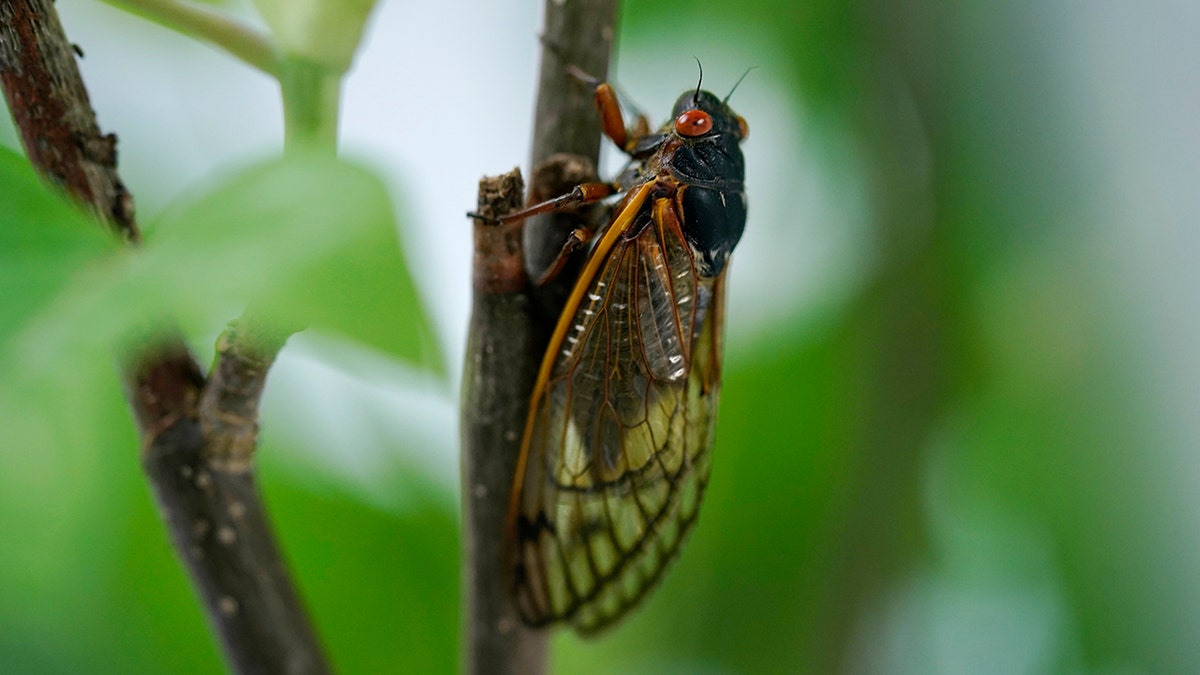What's that sound? Cicadas invade parts of Eastern US
Incessant cicada shrill alarms a Georgia town. Fox News' Steve Harrigan has the details.
The periodical cicadas currently singing across the eastern U.S. may emerge more frequently due to alterations in the insects' life cycles, according to researchers.
The trillions of 17-year Brood X cicadas took parks and backyards of 15 states by storm last month, aiming to procreate and die – lest they get eaten by residents' pet schnauzers.
BROOD X CICADAS INTERFERE WITH CARS, PLANES, WEATHER RADAR
According to a video report from Science Magazine, scientists hypothesize that the red-eyed bugs could return again sooner than is "normal."
In a November 1988 study published in the scientific journal Nature, ecologists and evolutionary biologists Andrew P. Martin and University of Connecticut professor Chris Simon wrote that in survey populations of both 13- and 17-year periodical cicadas, they found that 13-year cicadas in a large region of central North America were descendants of 17-year cicadas that had "switched their life-cycle length to 13 years."
It was an observation the pair said provided the "first strong genetic evidence that life-cycle length is a plastic trait" among the creatures and the "change in maturation time and the resultant anomalous distribution of cytoplasmic and nuclear gene markers" showed that the cicadas had become isolated from the parent brood and joined an already existing brood as a result.
In an email to Fox News, Simon wrote Friday that the switch happened around 200,000 years ago, and is due to a warmer climate.
"Eventually, all 17-year cicadas might become 13-year cicadas as the climate continues to warm," Simon said. "We know that this happened about 200,000 years ago in the upper Midwest. All Decim-group 13-year cicadas in central Missouri and much of southern Illinois switched life cycles from 17 to 13 years 200,000 years ago. We can tell by looking at their DNA and abdomen color."
She told Science Magazine that over the warming period cicadas would come out more often four years early, but it happened so many times and so often that it "gradually became genetically assimilated" – or a "genetic trait" instead of a plastic one.
Simon believes all periodical cicadas have the "opportunity" to emerge early or late within a four-year window, allowing "evolutionary flexibility" and giving cicadas a better chance of survival.
In 2017, Simon took to the streets – surveying the early emergences of Brood X cicadas in the Washington, D.C., area.
WHITE HOUSE PRESS CORPS FLIGHT TO UK DELAYED FOR HOURS BY CICADAS
Comparing her observations from four years ago to the present day, Simon said she observed more dense populations of cicadas in the same areas.
According to Science Magazine, this indicates the possibility that enough four-year early cicadas had survived and reproduced in 2017 that they could emerge early once more in 2034.

An adult cicada is seen, in Washington, Thursday, May 6, 2021. Credit: AP Photo/Carolyn Kaster
The outlet noted that another emergence of Brood X could happen at the same time.
That said, there still some unknown variables, including just how the broods know to keep track of the four-year periods.
Simon believes the cicadas have an "internal molecular counter that is controlled by gene regulation in the form of epigenetic modification of the DNA strands."
Until that can be determined, Simon said the U.S. can expect more cicadas to emerge earlier.
CLICK HERE FOR THE FOX NEWS APP
"If we have continued climate change – which we are expecting – and a continued warming, then we would expect more and more individuals to come out four years early," Simon told Science Magazine."


